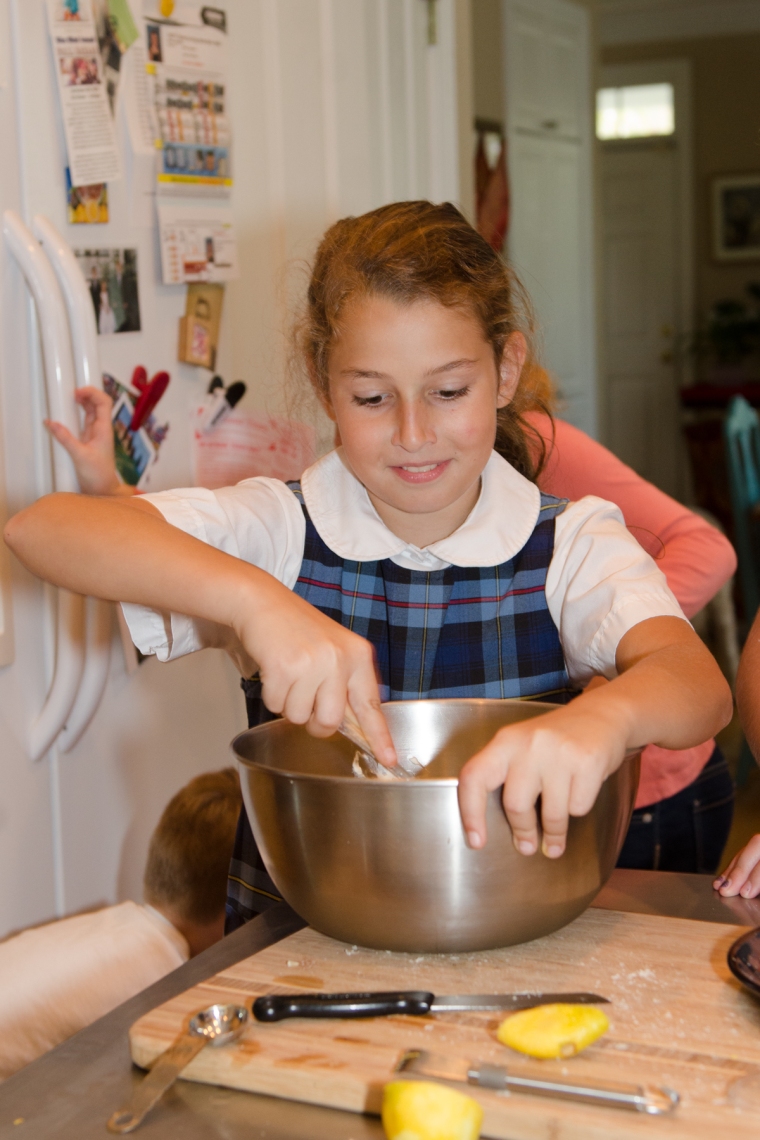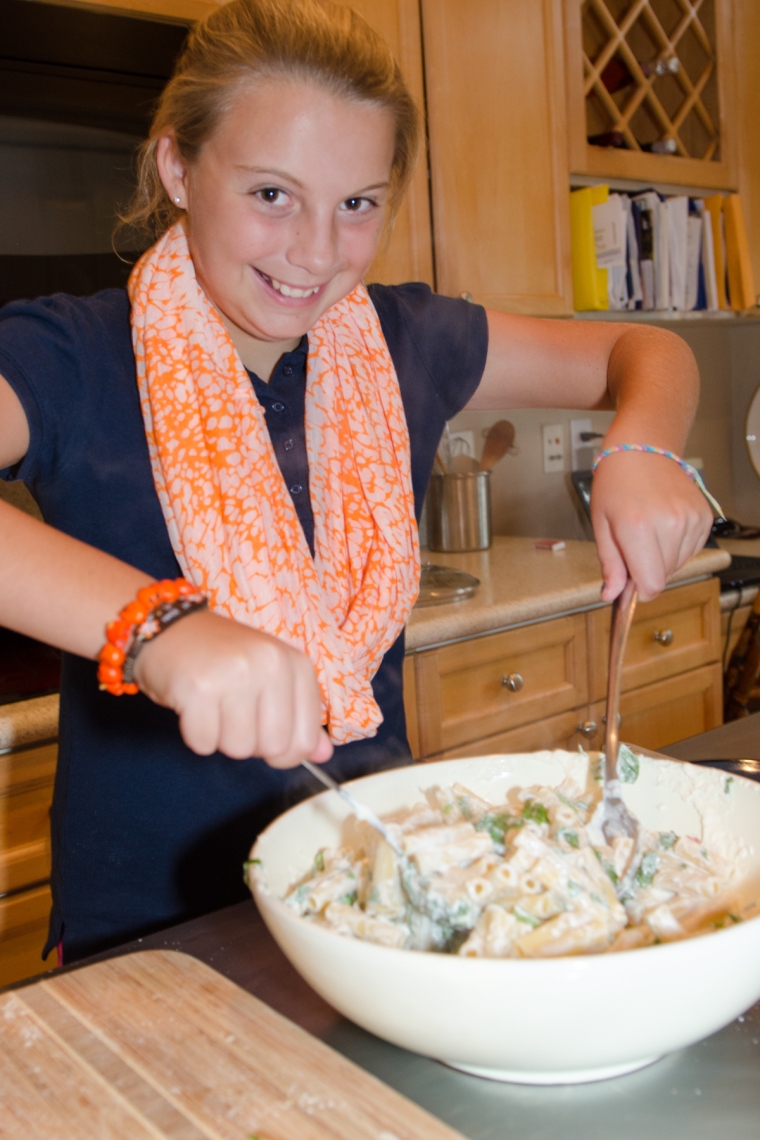Benvenuti! We are back in la cucina with our Italian in the Kitchen students.

For our first lesson, I wanted to use ricotta – the first cheese an Italian mother introduces to her baby as it is naturally pleasing to children with its delicate flavor and light consistency. Be sure to use a high quality fresh ricotta and as always, make sure it is whole milk.

I was pleased to hear one of my students exclaim that she loves ricotta and often enjoys it as a snack simply spread on toast! What a great idea! What a brava ragazza!

Here is the recipe – this is a great beginner recipe; very simple, quick, delicious and pleasing. The children enjoyed measuring the ricotta, grating the parmigiano, zesting and juicing the limone.
The sauce is not cooked but rather warmed in an impromptu bain marie atop the boiling pasta pot. While this is a smart use of energy and time – it is not safe for children to perform. So parents be sure to step in do this last step, please!
Ecco la ricetta del giorno – here is the recipe of the day!
serves 6
1 pound good-quality pasta, in a short twisted shape or with a hole (such as penne or gemelli)
1 15-ounce package (about 2 cups) fresh ricotta cheese
1 cup freshly grated Parmesan cheese
2 tablespoons good-quality extra virgin olive oil
zest of 1 lemon
juice of half the lemon
1/2 teaspoon coarse salt
1/2 teaspoon freshly ground black pepper
1/2 loosely packed basil leaves, sliced thin, as in a chiffonade
Set a pot of water to boil. (Be sure not to have the water over the 1/2 mark of the pot. While you always want to boil your pasta in plenty of water, in this case it is wise to use a larger pot and keep the water level relatively low) When it boils, add 2 tablespoons of salt and then the pasta. While the pasta is cooking, ladle one cup of the pasta water into a cup or bowl and set aside. (you can use this water if you need to lighten up your sauce)
In a metal bowl wide enough to fit over the top of the pot, mix together the remaining ingredients, excluding the basil. When there are about 2 minutes remaining in the pasta’s cooking time, place the bowl over the pot and slowly stir the ricotta and other ingredients. You should see it loosening as it warms. (Make sure the boiling water does not boil over the mixing bowl, it could burn you)
When the pasta is cooked al dente, drain it, add the basil to the bowl of sauce and toss with the drained pasta. Here is where you can use the extra pasta water that you set aside if needed. I found that the water was needed when we wanted to reheat the pasta – the sauce had become sticky and dry. Adding a bit of the starchy, salty water loosened up the sauce and helped it to again coat the pasta.
In Italia, pasta is served as a first course and Italians eat much smaller portions of pasta. This lovely dish should be used in the same way. It would go very well with roast chicken as a second course with perhaps a side of rainbow chard sauteed in olive oil, garlic. Add a splash of limone before serving!
Buon Appetito!



La ricotta
il parmigiano
il limone
il sale
la pasta
l’acqua
il basilico
la pentola
la scodella
il cucchiaio di legno
il coltello
la grattugia
la bilancia
A note about ricotta cheese from Marcella Hazan, my favorite Italian cook book author, who passed away last week at the age of 89. She is considered the cook book author and teacher who brought real Italian cooking to the American home cook. Marcella Hazan 1923 – 2013
“The word ricotta literally means “recooked” and it names, as it describes, the cheese made when whey, the watery residue from the making of another cheese, is cooked again. The resulting product is milk white, very soft, granular, and mild tasting. It is a most resourceful ingredient in the kitchen: It can be used as part of a spread for canapes; it is combined with sauteed Swiss chard or spinach to make a meatless stuffing for ravioli and tortellini, again combined with Swiss chard or spinach, it can be used to make green gnocchi; it can be part of a pasta sauce; it is the key component of the batter for ricotta fritters, a marvelously light dessert; and of course, there is ricotta cake, versions of which are beyond numbering.”
Essentials of Classic Italian Cooking



